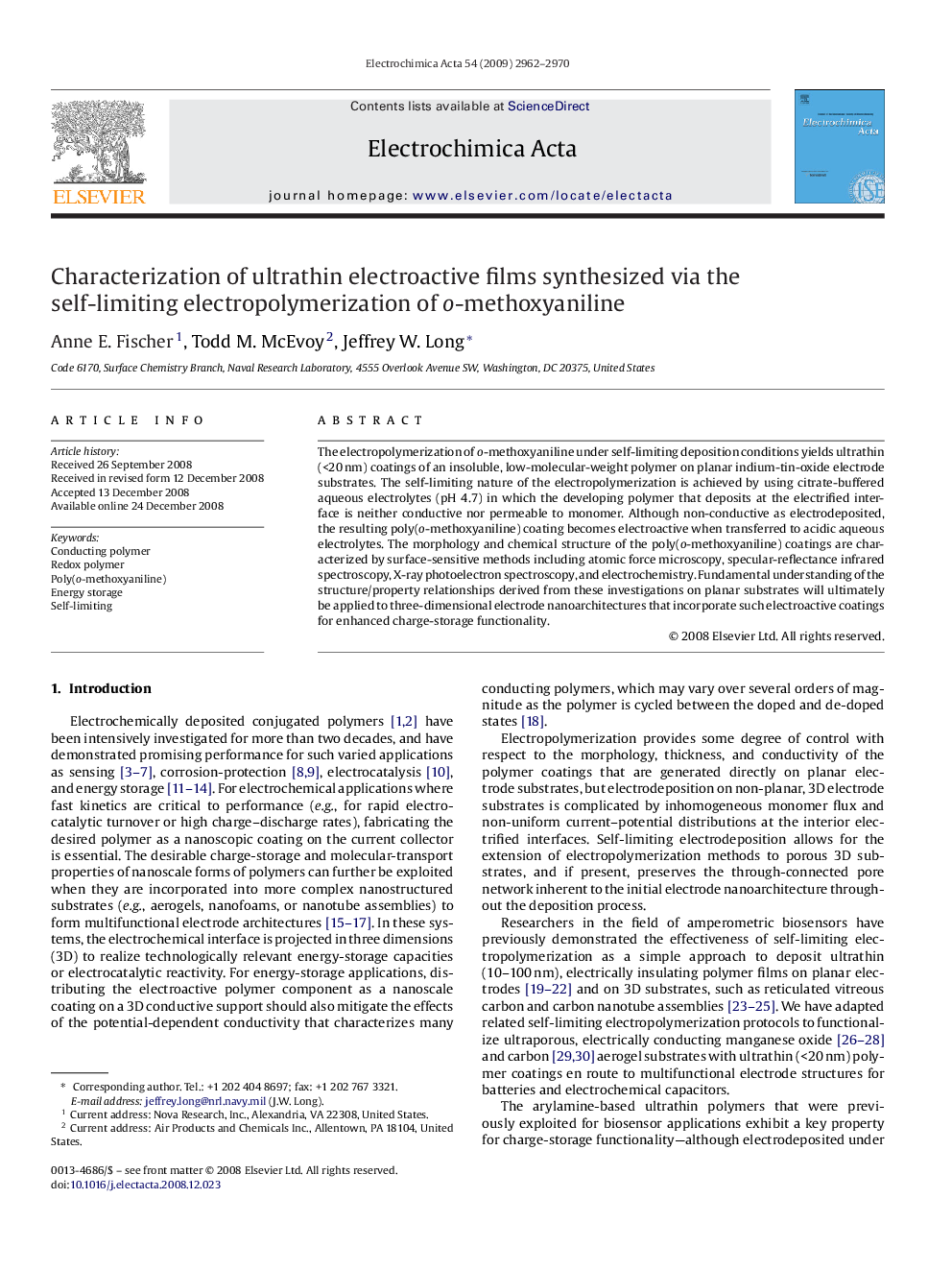| Article ID | Journal | Published Year | Pages | File Type |
|---|---|---|---|---|
| 193272 | Electrochimica Acta | 2009 | 9 Pages |
The electropolymerization of o-methoxyaniline under self-limiting deposition conditions yields ultrathin (<20 nm) coatings of an insoluble, low-molecular-weight polymer on planar indium-tin-oxide electrode substrates. The self-limiting nature of the electropolymerization is achieved by using citrate-buffered aqueous electrolytes (pH 4.7) in which the developing polymer that deposits at the electrified interface is neither conductive nor permeable to monomer. Although non-conductive as electrodeposited, the resulting poly(o-methoxyaniline) coating becomes electroactive when transferred to acidic aqueous electrolytes. The morphology and chemical structure of the poly(o-methoxyaniline) coatings are characterized by surface-sensitive methods including atomic force microscopy, specular-reflectance infrared spectroscopy, X-ray photoelectron spectroscopy, and electrochemistry. Fundamental understanding of the structure/property relationships derived from these investigations on planar substrates will ultimately be applied to three-dimensional electrode nanoarchitectures that incorporate such electroactive coatings for enhanced charge-storage functionality.
